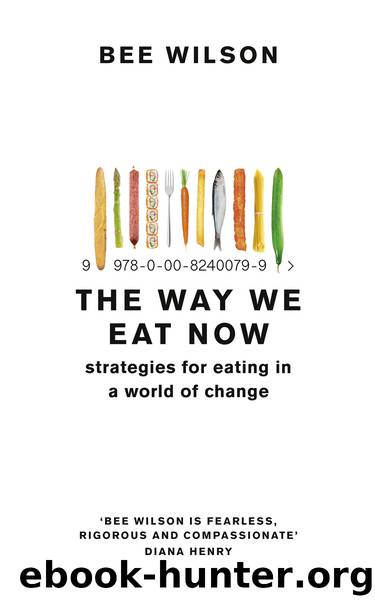The Way We Eat Now by Bee Wilson

Author:Bee Wilson [Bee Wilson]
Language: eng
Format: epub
Publisher: HarperCollins Publishers
Published: 2019-01-31T16:00:00+00:00
Now comes quinoa
During the whole of the 1950s, the New York Times mentioned quinoa just once. The year was 1954 and the headline was ‘Now Comes Quinoa’. A tiny item on the news pages noted that the US Department of Agriculture was ‘tinkering with the thin leaves of the quinoa plant’ as a possible spinach substitute for Americans. The anonymous author found that ‘the tender young shoots serve as salad greens’. He or she did not recommend eating quinoa seeds, however, complaining that they tasted ‘something like soap’.15
To say that tastes change is an understatement. Between 1990 and 2018, the New York Times ran more than three hundred stories in which quinoa featured, and they were all very definitely about the seeds and not the leaves. Cookery columnists shared their excitement about rediscovering this grain-like seed that was as wholesome as brown rice but higher in protein. And gluten free!
By the early 2000s, among healthy eaters, quinoa was close to becoming a staple. From 1961 to 2014 quinoa production in Peru increased from 22,500 tonnes to 114,300 tonnes. Quinoa salad is now a byword for healthy eating all over the world. I’ve seen it in Cape Town and in London; in Mumbai and in Brussels.
Back in the Andes, where the seed has been cultivated and eaten since ancient times, quinoa consumption is declining. In the southern altiplano of Bolivia, where quinoa is grown for export, many of the farmers are no longer eating their own quinoa because it simply costs too much. Sven-Erik Jacobsen is a professor of life sciences in Copenhagen who has been doing field work on quinoa in Bolivia for more than twenty years. Jacobsen has observed at first hand how the world’s runaway appetite for quinoa has affected the lives of those who used to eat it as a staple food in Bolivia. In the year 2000 the price of quinoa was US$28.40 per 100 kilos. By 2008, it was $204.50, an increase of more than 600 per cent.16
Because of this huge and sudden price hike, many Bolivians can’t afford to gain the nutritional benefit of their own quinoa. During the same period in which world production of quinoa tripled, Bolivian consumption went down by more than a third. It’s now cheaper and easier for Bolivians to eat instant wheat noodles than to buy the staple carbohydrate of their own land. Aid workers fear that the thirst from health-conscious North Americans for super-nutritious quinoa to add to their already healthy diets may lead to a rise in malnutrition in Bolivia, as locals increase the amount of poor quality over-refined carbohydrates in their diets.
The rising demand for quinoa has left its mark on the land. The urgency of producing vastly more quinoa in the area of Bolivia around the Uyuni salt flat has completely changed the way that farming is done. It used to be that quinoa was farmed manually, using methods that were slow and laborious but sustainable. Now, increased use of tractors has led to soil degradation.
Download
This site does not store any files on its server. We only index and link to content provided by other sites. Please contact the content providers to delete copyright contents if any and email us, we'll remove relevant links or contents immediately.
| Culinary Biographies | Essays |
| Food Industry | History |
| Reference |
A Court of Wings and Ruin by Sarah J. Maas(7560)
The Sprouting Book by Ann Wigmore(3510)
Better Homes and Gardens New Cookbook by Better Homes & Gardens(3485)
The Death of the Heart by Elizabeth Bowen(3483)
BraveTart by Stella Parks(3366)
Salt, Fat, Acid, Heat: Mastering the Elements of Good Cooking by Nosrat Samin(3078)
Sauces by James Peterson(3016)
The Bread Bible by Rose Levy Beranbaum(2969)
Kitchen confidential by Anthony Bourdain(2969)
Classic by Mary Berry(2916)
Solo Food by Janneke Vreugdenhil(2897)
Ottolenghi - The Cookbook by Yotam Ottolenghi(2802)
Martha Stewart's Baking Handbook by Martha Stewart(2747)
Day by Elie Wiesel(2688)
Betty Crocker's Good and Easy Cook Book by Betty Crocker(2657)
My Pantry by Alice Waters(2511)
The Plant Paradox by Dr. Steven R. Gundry M.D(2511)
The Kitchen Counter Cooking School by Kathleen Flinn(2454)
Hot Sauce Nation by Denver Nicks(2423)
